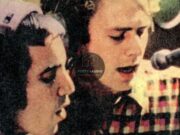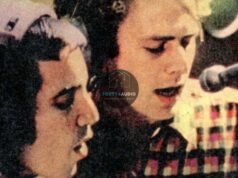10 Albums That Changed Music Forever
Classic rock isn’t a genre – it’s a legacy. It’s the sound of rebellion, reinvention, and raw emotion pressed into vinyl grooves and blasted through tube amps. From the late 1960s through the early 1980s, a wave of albums emerged that didn’t just define a musical era – they shaped the DNA of modern music. Whether you’re a lifelong collector or a curious newcomer, this guide explores 10 of the best classic rock albums of all time, unpacking their historical context, cultural impact, and the lesser-known stories that make them timeless.
Led Zeppelin IV and the Birth of Mythic Rock
Released: 1971
Key Tracks: Stairway to Heaven, Black Dog, Rock and Roll
Led Zeppelin’s fourth album, often referred to simply as IV, is a masterclass in sonic storytelling. With no official title or band name on the cover, the band let the music speak for itself – and it roared.
Recording Techniques: Jimmy Page’s production wizardry shines here, especially on When the Levee Breaks, where John Bonham’s thunderous drums were recorded in a stairwell using ambient mics. The album blends hard rock, folk, and blues with mystical overtones.
Cultural Impact: Stairway to Heaven became a rite of passage for guitarists and a staple of FM radio. The album’s influence can be heard in everything from heavy metal to progressive rock.
Rare Fact: The symbols on the cover represent each band member, with Page’s Zoso sigil still sparking debate among fans and scholars.
Pink Floyd’s The Dark Side of the Moon and the Sound of the Psyche
Released: 1973
Key Tracks: Time, Money, Us and Them
This isn’t just an album – it’s an experience. The Dark Side of the Moon is a sonic journey through the human condition, wrapped in lush production and philosophical lyrics.
Recording Techniques: Engineer Alan Parsons helped pioneer tape loops, analog synths, and quadraphonic sound. Clare Torry’s improvised vocals on The Great Gig in the Sky remain one of rock’s most haunting moments.
Cultural Impact: The album spent over 900 weeks on the Billboard 200 and became a touchstone for concept albums. Its themes of madness, mortality, and materialism still resonate.
Rare Fact: The heartbeat that bookends the album was recorded from an actual human heart using a medical stethoscope.
Fleetwood Mac’s Rumours and the Art of Emotional Honesty
Released: 1977
Key Tracks: Go Your Own Way, Dreams, The Chain
Rumours is the sound of a band falling apart – and creating something beautiful in the process. Recorded amid breakups, affairs, and personal turmoil, it’s a raw yet polished portrait of emotional resilience.
Recording Techniques: The band used analog tape and layered harmonies to create a warm, intimate sound. Lindsey Buckingham’s guitar work and Christine McVie’s keyboard textures are especially notable.
Cultural Impact: With over 40 million copies sold, Rumours became a blueprint for emotionally honest pop-rock. Its influence can be heard in artists like Florence + The Machine and Haim.
Rare Fact: The Chain is the only track credited to all five members, stitched together from multiple song fragments.
Eagles’ Hotel California and the Soundtrack of Disillusionment
Released: 1976
Key Tracks: Hotel California, Life in the Fast Lane, New Kid in Town
The Eagles captured the dark underbelly of the American Dream with Hotel California, an album that blends rock, country, and soul with lyrical precision.
Recording Techniques: The dual guitar solo on the title track – performed by Don Felder and Joe Walsh – was meticulously layered and remains one of the most iconic in rock history.
Cultural Impact: The album became a symbol of 1970s excess and introspection. Its themes of fame, isolation, and spiritual emptiness still feel relevant.
Rare Fact: The Hotel California solo was recorded in just a few takes, despite its complexity.
Queen’s A Night at the Opera and the Theater of Rock
Released: 1975
Key Tracks: Bohemian Rhapsody, Love of My Life, You’re My Best Friend
Queen’s fourth album is a genre-defying spectacle. From operatic suites to vaudeville pop, A Night at the Opera is as ambitious as it is unforgettable.
Recording Techniques: The band used up to 180 overdubs on Bohemian Rhapsody, layering vocals and instruments to create a wall of sound. Freddie Mercury’s vocal range and theatricality are unmatched.
Cultural Impact: The album redefined what rock could be – bold, theatrical, and unapologetically grand. It paved the way for bands like Muse and My Chemical Romance.
Rare Fact: The album’s title was inspired by a Marx Brothers film, and the band later met Groucho Marx in person.
The Rolling Stones’ Exile on Main St. and the Gospel of Grit
Released: 1972
Key Tracks: Tumbling Dice, Rocks Off, Happy
Recorded in a French villa while evading British taxes, Exile on Main St. is a chaotic, soulful double album that captures the Stones at their most unfiltered.
Recording Techniques: Much of the album was recorded in the basement of Keith Richards’ rented mansion using the Rolling Stones Mobile Studio. The lo-fi, murky sound adds to its mystique.
Cultural Impact: Initially divisive, the album is now hailed as one of the greatest rock records ever. Its blend of blues, gospel, and country influenced countless garage and punk bands.
Rare Fact: The band’s erratic schedule and substance use meant that some tracks were pieced together from multiple sessions and players.
The Beatles’ Abbey Road and the Art of Farewell
Released: 1969
Key Tracks: Come Together, Something, Here Comes the Sun
Abbey Road is the Beatles’ final recorded album, and it feels like a curtain call. It’s polished, poignant, and packed with innovation.
Recording Techniques: The Moog synthesizer makes its debut, and the medley on Side B showcases the band’s compositional genius. George Harrison’s Here Comes the Sun was recorded with a newly acquired Moog and acoustic guitar.
Cultural Impact: The album’s cover became one of the most imitated images in music history. Its influence spans genres, from indie rock to orchestral pop.
Rare Fact: The crosswalk photo was taken in just six shots by photographer Iain Macmillan, standing on a ladder in the middle of the street.
The Who’s Who’s Next and the Power of Synthesis
Released: 1971
Key Tracks: Baba O’Riley, Behind Blue Eyes, Won’t Get Fooled Again
Originally conceived as part of a rock opera called Lifehouse, Who’s Next became a standalone triumph. It’s a perfect blend of raw energy and technological innovation.
Recording Techniques: Pete Townshend’s use of synthesizers was groundbreaking. The opening of Baba O’Riley is built on a repeating loop generated by a Lowrey organ.
Cultural Impact: The album helped define arena rock and influenced bands like U2 and Pearl Jam.
Rare Fact: The abandoned Lifehouse project was later revisited in Townshend’s solo work and live performances.
David Bowie’s Ziggy Stardust and the Rise of Glam Rock
Released: 1972
Key Tracks: Starman, Ziggy Stardust, Suffragette City
With The Rise and Fall of Ziggy Stardust and the Spiders from Mars, Bowie created a character that blurred the lines between fiction and reality.
Recording Techniques: The album was recorded quickly at Trident Studios, capturing a raw, immediate sound. Mick Ronson’s guitar work is a standout.
Cultural Impact: Ziggy became a symbol of gender fluidity, alienation, and artistic freedom. Bowie’s influence can be seen in artists from Lady Gaga to The Killers.
Rare Fact: Bowie retired the Ziggy persona on stage in 1973, shocking fans and bandmates alike.
AC/DC’s Back in Black and the Sound of Survival
Released: 1980
Key Tracks: Hells Bells, You Shook Me All Night Long, Back in Black
After the death of frontman Bon Scott, AC/DC returned with Back in Black, a tribute that became one of the best-selling albums of all time.
Recording Techniques: Producer Mutt Lange emphasized clarity and punch, using minimal overdubs and tight arrangements.
Cultural Impact: The album’s no-frills rock sound influenced bands like Guns N’ Roses and Metallica. It’s a staple of stadiums and playlists alike.
Rare Fact: The bell toll in Hells Bells was recorded using a custom-made bronze bell weighing over a ton.
Keep the Needle Moving
These albums aren’t just relics – they’re living, breathing works of art that continue to inspire. Whether you’re spinning vinyl, streaming lossless, or rediscovering these records through a new lens, they still carry the weight of their era and the spark of something timeless.
They taught us that rock could be poetic, theatrical, political, and deeply personal. They pushed the boundaries of what a studio could do, what a band could say, and what an album could mean. And they laid the foundation for everything from grunge to indie to modern pop-rock.
So the next time you drop the needle or cue up a playlist, remember: these aren’t just songs. They’re moments. Movements. Milestones.
Want more stories behind the music that shaped generations? Join the forty4 Audio community – where music isn’t background noise. It’s the main event.
Experience the music. Share the legacy. Keep the needle moving.









































